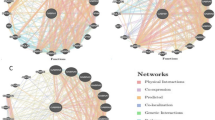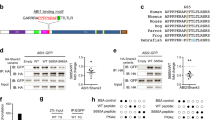Abstract
SHANK3, a member of SH3 and multiple ankyrin repeat domains (SHANK) proteins, plays a crucial role in synaptic development and functions. Mutations in SHANK3 have been linked to a number of neuropsychiatric and neurodevelopmental disorders, including autism spectrum disorder. In this study, the functional and structural impacts of non-synonymous single-nucleotide polymorphisms (SNPs) on SHANK3 were predicted. Various databases were used to extract 16,894 non-redundant SNPs, out of which 1179 were annotated as missense variants. Missense variants were categorized as deleterious or non-deleterious. Twenty-nine missense variants were unanimously recognized as deleterious and subjected to structural and stability analyses. Mutations, including L47P, G54W, G172D, G250C/D, and G627E, which posed drastic effects on the secondary structure of SHANK3, were modeled. Stability analyses introduced L47P, G54W, and G250D as the most destabilizing mutations, thus they were subjected to molecular dynamics simulation. Simulation revealed significant changes in intramolecular interactions and high fluctuations in residues of 1–350 that significantly affect the ANK functional domain. G250C/D and G635R consensus deleterious mutations were found in the first and second binding domains of SHANK3, and none were found in the post-translational modification sites. This study suggests L47P, G54W, and G250C/D deleterious mutations as priorities for future studies on SHANK3.






Similar content being viewed by others
References
Abraham M, Van Der Spoel D, Lindahl E, Hess B (2014) The GROMACS development team GROMACS user manual Versio 5
Adzhubei IA et al (2010) A method and server for predicting damaging missense mutations. Nat Methods 7:248. https://doi.org/10.1038/nmeth0410-248
Alonso-Gonzalez A, Rodriguez-Fontenla C, Carracedo A (2018) De novo mutations (DNMs) in Autism Spectrum Disorder (ASD): pathway and network analysis Fgene 9. https://doi.org/10.3389/fgene.2018.00406
Baio J (2014) Prevalence of autism spectrum disorder among children aged 8 years-autism and developmental disabilities monitoring network, 11 sites, United States, 2010 Morbidity and mortality weekly report Surveillance summaries (Washington, DC: 2002) 63:1
Baio J et al (2018) Prevalence of autism spectrum disorder among children aged 8 years—autism and developmental disabilities monitoring network, 11 sites, United States, 2014. MMWR Surveill Summ 67:1. https://doi.org/10.15585/mmwr.ss6706a1
Blom N, Gammeltoft S, Brunak S (1999) Sequence and structure-based prediction of eukaryotic protein phosphorylation sites1. J Mol Biol 294:1351–1362. https://doi.org/10.1006/jmbi.1999.3310
Boccuto L et al (2013) Prevalence of SHANK3 variants in patients with different subtypes of autism spectrum disorders. Eur J Hum Genet 21:310. https://doi.org/10.1038/ejhg.2012.175
Brown JT, Eum S, Cook EH, Bishop JR (2017) Pharmacogenomics of autism spectrum disorder. Pharmacogenomics 18:403–414. https://doi.org/10.2217/pgs-2016-0167
Calabrese R, Capriotti E, Fariselli P, Martelli PL, Casadio R (2009) Functional annotations improve the predictive score of human disease-related mutations in proteins. Hum Mutat 30:1237–1244. https://doi.org/10.1002/humu.21047
Capriotti E, Calabrese R, Casadio R (2006) Predicting the insurgence of human genetic diseases associated to single point protein mutations with support vector machines and evolutionary information. Bioinformatics 22:2729–2734. https://doi.org/10.1093/bioinformatics/btl423
Capriotti E, Fariselli P, Casadio R (2005) I-Mutant2. 0: predicting stability changes upon mutation from the protein sequence or structure. Nucleic Acids Res 33:W306–W310. https://doi.org/10.1093/nar/gki375
Choi Y, Sims GE, Murphy S, Miller JR, Chan AP (2012) Predicting the functional effect of amino acid substitutions and indels. PLoS One 7:e46688. https://doi.org/10.1371/journal.pone.0046688
De Baets G et al (2011) SNPeffect 4.0: on-line prediction of molecular and structural effects of protein-coding variants. Nucleic Acids Res 40:D935–D939. https://doi.org/10.1093/nar/gkr996
Dinkel H et al (2015) ELM 2016—data update and new functionality of the eukaryotic linear motif resource. Nucleic Acids Res 44:294–300. https://doi.org/10.1093/nar/gkv1291
Eisenberg D, Lüthy R, Bowie J (1997) VERIFY3D: assessment of protein models with three-dimensional profiles. In Methods in enzymology. vol 277. Academic Press. https://doi.org/10.1016/S0076-6879(97)77022-8
Gherardini PF, Helmer-Citterich M (2008) Structure-based function prediction: approaches and applications. Brief Funct Genomic Proteomic 7:291–302. https://doi.org/10.1093/bfgp/eln030
Hassan MS, Shaalan A, Dessouky M, Abdelnaiem AE, ElHefnawi M (2018) A review study: computational techniques for expecting the impact of non-synonymous single nucleotide variants in human diseases. Gene 680:20–33. https://doi.org/10.1016/j.gene.2018.09.028
Hecht M, Bromberg Y, Rost B (2015) Better prediction of functional effects for sequence variants. BMC Genomics 16:S1. https://doi.org/10.1186/1471-2164-16-S8-S1
Ishida H, Skorobogatov A, Yamniuk AP, Vogel HJ (2018) Solution structures of the SH 3 domains from Shank scaffold proteins and their interactions with Cav1. 3 calcium channels. FEBS Lett 592:2786–2797. https://doi.org/10.1002/1873-3468.13209
Johansen MB, Kiemer L, Brunak S (2006) Analysis and prediction of mammalian protein glycation. Glycobiol 16:844–853. https://doi.org/10.1093/glycob/cwl009
Källberg M, Margaryan G, Wang S, Ma J, Xu J (2014) RaptorX server: a resource for template-based protein structure modeling. In: Protein Structure Prediction. Springer, pp 17–27. https://doi.org/10.1007/978-1-4939-0366-5_2
Källberg M, Wang H, Wang S, Peng J, Wang Z, Lu H, Xu J (2012) Template-based protein structure modeling using the RaptorX web server. Nat Protoco 7:1511. https://doi.org/10.1038/nprot.2012.085
Laskowski RA, Jabłońska J, Pravda L, Vařeková RS, Thornton JM (2018) PDBsum: structural summaries of PDB entries. Prot Sci 27:129–134. https://doi.org/10.1002/pro.3289
Leblond CS et al (2014) Meta-analysis of SHANK mutations in autism spectrum disorders: a gradient of severity in cognitive impairments. PLoS Genet 10:e1004580. https://doi.org/10.1371/journal.pgen.1004580
Lemonnier É et al (2012) A randomised controlled trial of bumetanide in the treatment of autism in children. Translat Psychiatry 2:e202. https://doi.org/10.1038/tp.2012.124
Lilja J et al (2017) SHANK proteins limit integrin activation by directly interacting with Rap1 and R-Ras. Nat Cell Biol 19:292. https://doi.org/10.1038/ncb3487
Lindorff-Larsen K, Piana S, Palmo K, Maragakis P, Klepeis JL, Dror RO, Shaw DE (2010) Improved side-chain torsion potentials for the Amber ff99SB protein force field. Proteins 78:1950–1958. https://doi.org/10.1002/prot.22711
Lobanov MY, Bogatyreva N, Galzitskaya O (2008) Radius of gyration as an indicator of protein structure compactness. J Mol Biol 42:623–628. https://doi.org/10.1134/S0026893308040195
Lovell SC et al (2003) Structure validation by Cα geometry: ϕ, ψ and Cβ deviation. Proteins 50:437–450. https://doi.org/10.1002/prot.10286
Marchler-Bauer A et al (2016) CDD/SPARCLE: functional classification of proteins via subfamily domain architectures. Nucleic Acids Res 45:D200–D203. https://doi.org/10.1093/nar/gkw1129
Mashayekhi F, Mizban N, Bidabadi E, Salehi Z (2016) The association of SHANK3 gene polymorphism and autism. Minerva pediatrica
Monteiro P, Feng G (2017) SHANK proteins: roles at the synapse and in autism spectrum disorder. Nat Rev Neurosci 18:147–157. https://doi.org/10.1038/nrn.2016.183
Nia FH, Kreienkamp H-J (2018) Functional relevance of missense mutations affecting the N-terminal part of Shank3 found in autistic patients. Front Mol Neurosci 11 https://doi.org/10.3389/fnmol.2018.00268
Peça J et al (2011a) Shank3 mutant mice display autistic-like behaviours and striatal dysfunction. Nature 472:437. https://doi.org/10.1038/nature09965
Peça J, Ting J, Feng G (2011b) SnapShot: autism and the synapse. Cell 147:706–706. e701
Pejaver V et al. (2017) MutPred2: inferring the molecular and phenotypic impact of amino acid variants BioRxiv:134981 https://doi.org/10.1101/134981
Petersen B, Petersen TN, Andersen P, Nielsen M, Lundegaard C (2009) A generic method for assignment of reliability scores applied to solvent accessibility predictions. BMC Struct Biol 9:51. https://doi.org/10.1186/1472-6807-9-51
Piao L, Chen Z, Li Q, Liu R, Song W, Kong R, Chang S (2019) Molecular dynamics simulations of wild type and mutants of SAPAP in Complexed with Shank3. MDPI 20:224. https://doi.org/10.3390/ijms20010224
Qiu S et al (2018) Association between SHANK3 polymorphisms and susceptibility to autism spectrum disorder. Gene 651:100–105. https://doi.org/10.1016/j.gene.2018.01.078
Quan L, Lv Q, Zhang Y (2016) STRUM: structure-based prediction of protein stability changes upon single-point mutation. Bioinformatics 32:2936–2946. https://doi.org/10.1093/bioinformatics/btw361
Radivojac P et al (2010) Identification, analysis, and prediction of protein ubiquitination sites. Proteins 78:365–380. https://doi.org/10.1002/prot.22555
Rodrigues CH, Pires DE, Ascher DB (2018) DynaMut: predicting the impact of mutations on protein conformation, flexibility and stability. Nucleic Acids Res 46:W350–W355. https://doi.org/10.1093/nar/gky300
Rodriguez-Casado A (2012) In silico investigation of functional nsSNPs an approach to rational drug design. Res Rep Med Chem 2:31–42. https://doi.org/10.2147/RRMC.S28211
Sala C, Vicidomini C, Bigi I, Mossa A, Verpelli C (2015) Shank synaptic scaffold proteins: keys to understanding the pathogenesis of autism and other synaptic disorders. J Neurochem 135:849–858. https://doi.org/10.1111/jnc.13232
Sanders SJ et al (2012) De novo mutations revealed by whole exome sequencing are strongly associated with autism. Nature 485:237. https://doi.org/10.1038/nature10945
Shao S, Xu S, Yang J, Zhang T, He Z, Sun Z, Song R (2014) A commonly carried genetic variant, rs9616915, in SHANK3 gene is associated with a reduced risk of autism spectrum disorder: replication in a Chinese population. Mol Biol Rep 41:1591–1595. https://doi.org/10.1007/s11033-013-3005-5
Sheng M, Kim E (2000) The Shank family of scaffold proteins. J Cell Sci 113:1851–1856
Shin W-H, Lee GR, Heo L, Lee H, Seok C (2014) Prediction of protein structure and interaction by GALAXY protein modeling programs. J Biodesign 2:1–11
Sigrist CJ et al (2012) New and continuing developments at PROSITE. Nucleic Acids Res 41:D344–D347. https://doi.org/10.1093/nar/gks1067
Tang H, Thomas P (2016) PANTHER-PSEP: predicting disease-causing genetic variants using position-specific evolutionary preservation. Bioinformatics 32:2230–2232. https://doi.org/10.1093/bioinformatics/btw222
Vaser R, Adusumalli S, Leng SN, Sikic M, Ng P (2016) SIFT missense predictions for genomes. Nat Protocols 11:1. https://doi.org/10.1038/nprot.2015.123
Wiederstein M, Sippl MJ (2007) ProSA-web: interactive web service for the recognition of errors in three-dimensional structures of proteins. Nucleic Acids Res 35:407–410. https://doi.org/10.1093/nar/gkm290
WM M (1994) Diagnostic and statistical manual of mental disorders. Fourth edn. Am Psychiatric Assoc
Yang J, Yan R, Roy A, Xu D, Poisson J, Zhang Y (2015) The I-TASSER suite: protein structure and function prediction. Nat Methods 12:7. https://doi.org/10.1038/nmeth.3213
Zhang Y, Skolnick J (2004) Scoring function for automated assessment of protein structure template quality. Proteins 57:702–710. https://doi.org/10.1002/prot.20264
Zhao Q et al (2014) GPS-SUMO: a tool for the prediction of sumoylation sites and SUMO-interaction motifs. Nucleic Acids Res 42:325–330. https://doi.org/10.1093/nar/gku383
Zhao Y et al (2016) The single nucleotide polymorphism study on the SHANK3 and NLGN3 gene in association with autism in Wenzhou children. Int J Clin Exp Pathol 9:5694–5699
Acknowledgments
Research reported in this publication was supported by the Elite Researcher Grant Committee under award number 963461 from the National Institutes for Medical Research Development (NIMAD), Tehran, Iran, to Y. Ghasemi.
Author information
Authors and Affiliations
Corresponding authors
Ethics declarations
Declaration of Competing Interest
The authors declare that they have no known competing financial interests or personal relationships that could have appeared to influence the work reported in this paper.
Additional information
Publisher’s Note
Springer Nature remains neutral with regard to jurisdictional claims in published maps and institutional affiliations.
Electronic supplementary material
Figure S1
a) Functional domains of the SHANK3 protein, retrieved by CDD. b) 3D-structure of SHANK3 functional domains, retrieved from the Protein Data Bank. (PNG 1473 kb)
Figure S2
Structural property of the SHANK3 protein. The first line displays the SHANK3 sequence. Second and third lines display 3-state and 8-state secondary structure prediction in which H, E, and C stand for helix, β-sheet, and coil, respectively. The fourth line displays solvent accessibility in which E, M, and B stands for exposed, medium, and buried, respectively. Last line shows order/disorder region with * indicating disorder. (JPG 1947 kb)
Figure S3
Positions of the target residues for MD simulation in the crystallography structure of the N-terminus part of SHANK3 protein with the PDB ID of 5G4X. (PNG 631 kb)
Figure S4
Superimposition of residues 1–100 of the crystallography structure (yellow) over residues 1–100 of model protein obtained at the end of MD simulation time related to: (a) wild type, (b) L47P, (c) G54D, and (d) G250D. (PNG 2940 kb)
Table S1
Different types of SNPs in SHANK3 gene, retrieved from dbSNP, OMIM, HGMD, and GWAS databases. (XLS 1447 kb)
Table S2
Functional impact of missense SNPs predicted by various tools. (XLS 261 kb)
Table S3
Affected motifs and potential structural effects predicted by MutPred 2. Information (XLS 59 kb)
Table S4
I-TASSER results for top five models of each mutant and wild protein. (XLS 98 kb)
Table S5
Evaluation of wild-type and mutant protein models by five different tools. (XLS 71 kb)
Table S6
Ligand binding sites of SHANK3 protein, retrieved by RaptorX binding server. (DOCX 115 kb)
Table S7
Post-translational modification sites retrieved from different servers. (DOCX 65 kb)
Rights and permissions
About this article
Cite this article
Owji, H., Eslami, M., Nezafat, N. et al. In Silico Elucidation of Deleterious Non-synonymous SNPs in SHANK3, the Autism Spectrum Disorder Gene. J Mol Neurosci 70, 1649–1667 (2020). https://doi.org/10.1007/s12031-020-01552-5
Received:
Accepted:
Published:
Issue Date:
DOI: https://doi.org/10.1007/s12031-020-01552-5




